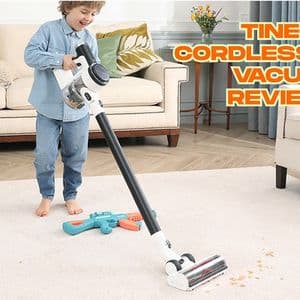Vacuum cleaners may seem like simple tools. But in reality, they can vary dramatically in performance, features, and durability. The right choice can save you time, protect your floors, and even improve air quality indoors.
So, where should you start? Let’s break it down step-by-step.
Know Your Cleaning Needs
Not all homes require the same vacuuming power or design. A household with pets will need different features than a compact apartment. Large homes may benefit from bigger dust capacity, while smaller spaces might require lightweight designs for easy storage.
Ask yourself these questions:
-
Do you have mainly carpet, hardwood, or mixed flooring?
-
Will you use it for quick daily clean-ups or deep weekly cleaning?
-
Is allergy control a priority?
By clarifying your needs upfront, you can avoid overpaying for features you won’t use.
Understand the Main Types
Before choosing, it’s worth knowing the primary categories available:
Upright Vacuums – These are powerful and great for deep carpet cleaning. They’re often heavier but can cover large areas quickly.
Canister Vacuums – Ideal for homes with a mix of flooring types. They’re more maneuverable and often come with specialized attachments.
Stick Vacuums – Slim and lightweight, they’re perfect for quick clean-ups. Some models double as handheld units for above-floor cleaning.
Robot Vacuums – Great for low-maintenance cleaning, but they might not match the deep cleaning performance of other types.
Suction Power and Performance
Suction power is one of the most important factors in a vacuum cleaner’s effectiveness. Look for models with adjustable suction, which can help you protect delicate surfaces while still cleaning effectively.
While wattage can give an idea of power, airflow and sealed suction systems are often better indicators of real performance. This is particularly relevant for anyone looking at premium models such as the best buy vacuum cleaners UK customers often choose for their efficiency.
Filtration Matters
If you or someone in your home suffers from allergies, filtration is not optional. High-Efficiency Particulate Air (HEPA) filters can trap tiny particles like pollen, pet dander, and dust mites.
A vacuum with a sealed filtration system ensures that all air passes through the filter, preventing allergens from leaking back into the room.
Bagged vs. Bagless
Bagged vacuums often hold more dirt and release less dust when emptying, making them a better choice for allergy sufferers. Bagless models, on the other hand, save money on replacement bags and let you see when the container is full.
Your choice here depends on whether convenience or cleanliness is your top priority.
Corded vs. Cordless
Corded models provide consistent power for longer cleaning sessions. Cordless or wireless vacuum cleaner options offer better portability and convenience, especially for spot cleaning or reaching awkward spaces.
If you go cordless, pay attention to battery life and charging time. Some high-end models come with removable batteries so you can swap in a spare.
Attachments and Accessories
The right accessories can make cleaning more versatile. Look for:
-
Crevice tools for tight spaces
-
Upholstery brushes for furniture
-
Motorized pet tools for hair removal
-
Extension wands for ceiling corners
These add-ons may seem minor, but they can dramatically improve your cleaning results.
Weight and Maneuverability
A heavy vacuum can make cleaning feel like a chore. If you have stairs or limited storage space, opt for a lightweight model that’s easy to carry.
Swivel steering and low-profile heads help with navigating furniture and tight corners.
Noise Level
If you live in an apartment or often clean at odd hours, noise can be an important factor. Some models operate quietly without compromising suction power.
Manufacturers often list decibel ratings, so check these if noise is a concern.
Budget Considerations
A higher price tag does not always guarantee better performance. Many mid-range models deliver excellent results. The key is matching features to your actual needs rather than paying for extras you won’t use.
For those seeking the best stick vacuum cleaner, balance portability with performance to ensure you get the most value for your money.
Longevity and Maintenance
Durability is an often-overlooked factor. Read the manufacturer’s recommendations for filter changes, bag replacements, and belt inspections.
Regular maintenance extends the lifespan of your vacuum and ensures consistent performance.
Final Thoughts
Choosing a good vacuum cleaner means thinking beyond brand names and marketing claims. By focusing on core features—suction, filtration, portability, and usability—you can find a model that not only fits your home but also makes cleaning less of a burden.
A thoughtful purchase will pay off in cleaner floors, better air quality, and less time spent wrestling with your cleaning tools.

















